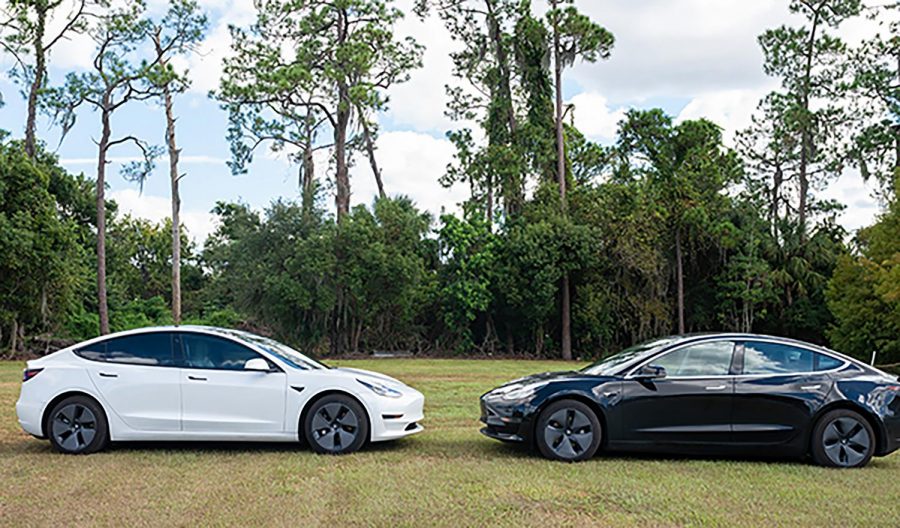Since 2009, the Fremont Police Department (FPD) in Fremont, California has begun using hybrid powered vehicles in its patrol fleet and in 2019 added its first fully electric vehicle to the fleet. Now in 2021, the patrol fleet has over 40 vehicles that are either hybrid or fully electric powered. This rise in the use of electric and hybrid vehicles is seen around the country and also on the Trinity campus.
Junior Katie Corddry has been driving an electric car for six months and loves the convenience and the environmental pros.
“It’s environmentally conscious and there’s an immediate torque, which makes it fun to drive,” Corddry said. “It’s definitely convenient to not have to go to gas stations.”
English teacher Dr. Robert J. Boerth has had his Chevrolet Bolt for over two years now and enjoys his electric vehicle for many of the same reasons Corddry does.
“It is very low on maintenance and upkeep, and electric cars are fun to drive,” Boerth said. “ They have a lot of power right out of the start.”
Boerth did add that, despite the many positives, electric cars can present various challenges for longer travel.
“ The biggest negative is that, if you’re taking long road trips, you have to plan ahead,” Boerth said. “If you’re needing a trip where you’re going to have to charge along the way, you have to do a little bit of research to find out where the fast charging stations are and make stops supporting that.”
Corddry added some additional concerns with going too long without charging the car and what happens when there’s no miles left on the car.
“You can’t go that far,” Corddry said.” “ There’s a limited range [which is about] 200 miles max. Unlike a gas car, if your car gets to zero miles, it’s called bricking and you can never drive the car again.”
Unlike in a gas powered car where it would just be towed, something called “bricking” happens in an electric car. The car will come to a halt and begin to beep and all the controls will lock up. The car doesn’t budge any further and is “an immobile bit of sculpture blinking its hazard lights on the highway,” according to a Tesla owner on the website Jalopnik.
As more electric cars come on the road, many consumers wonder when the U.S. will go fully electric.
“I think the fast charge technology is going to improve,” Boerth said. “I think another possibility is that they will develop the technology to possibly remove a depleted battery and put in a fully charged battery.”
The Chinese car company Geely in China is in fact planning to develop over 5,000 “battery swapping stations” in China by 2025 with the associated service E-Energee. According to Geely, the battery swapping stations enable the electric-car battery to be switched out for a fully charged one in 59 seconds, without the driver even having to exit the vehicle.
Boerth added what he loves most about driving an electric car.
“What I enjoy most is that it’s a nice car to drive,” Boerth said. “It’s quiet, it’s responsive and it’s nice when you’re driving around to know that you’re riding a more energy efficient and environmentally friendly vehicle.”
















